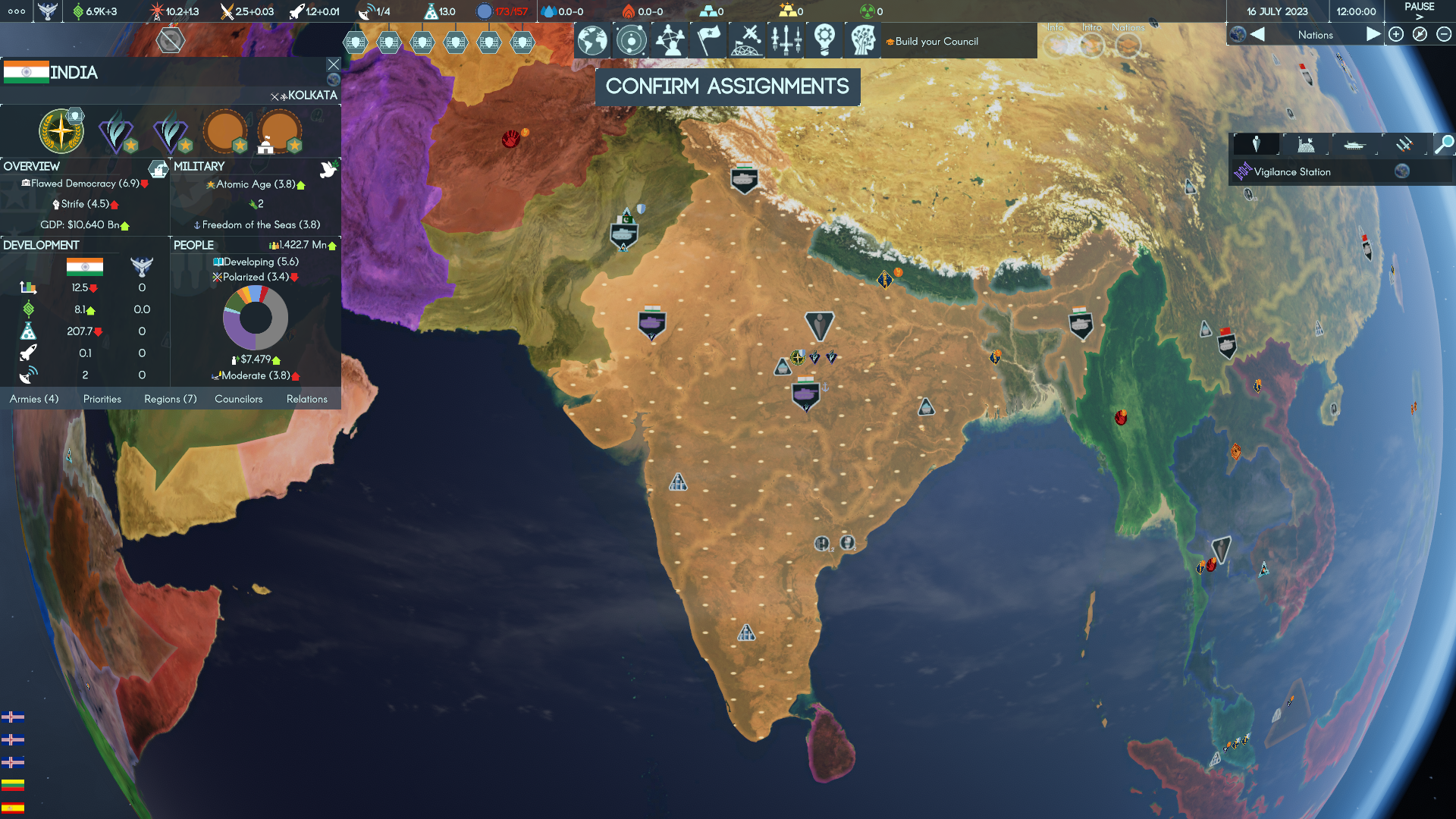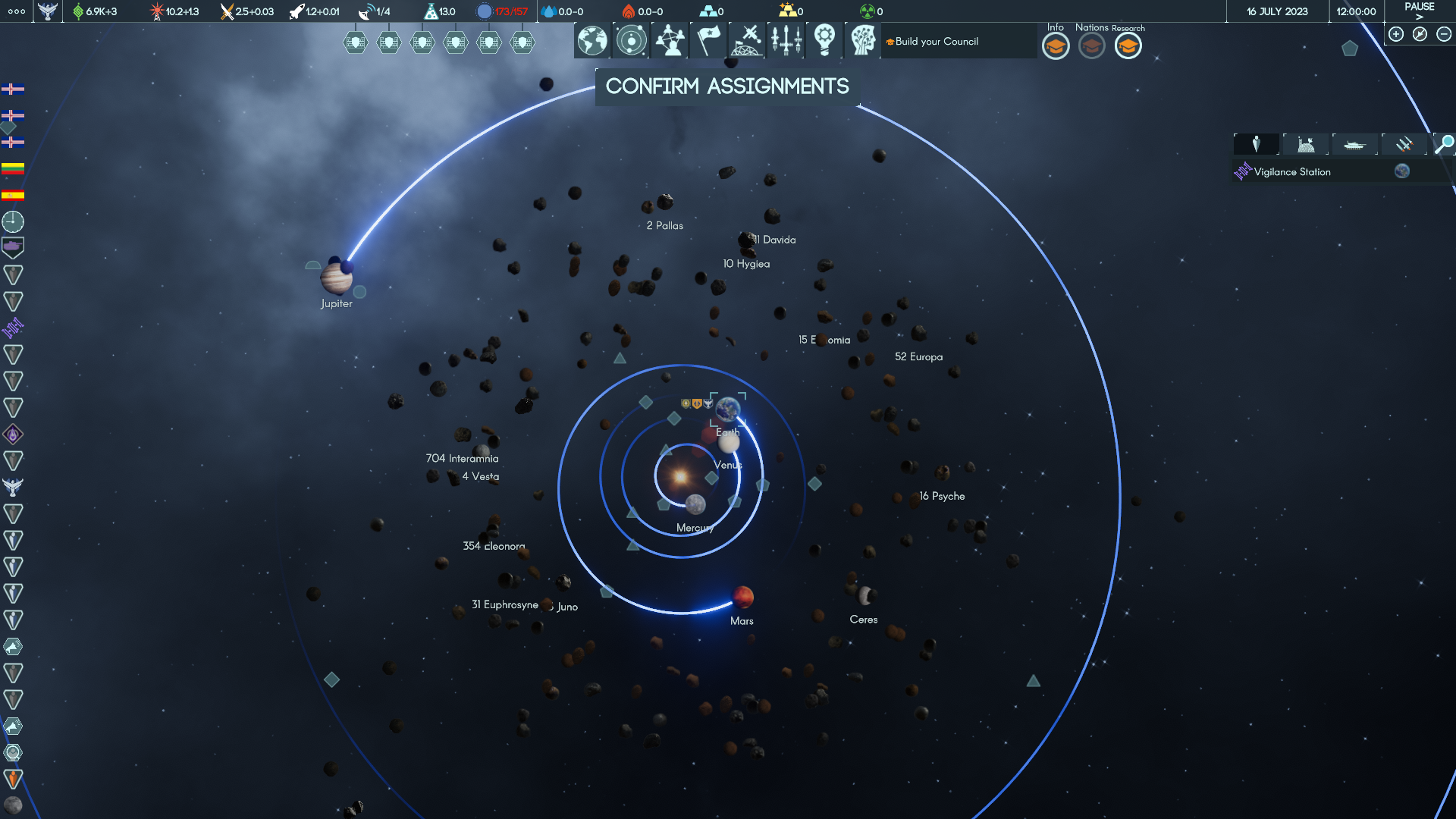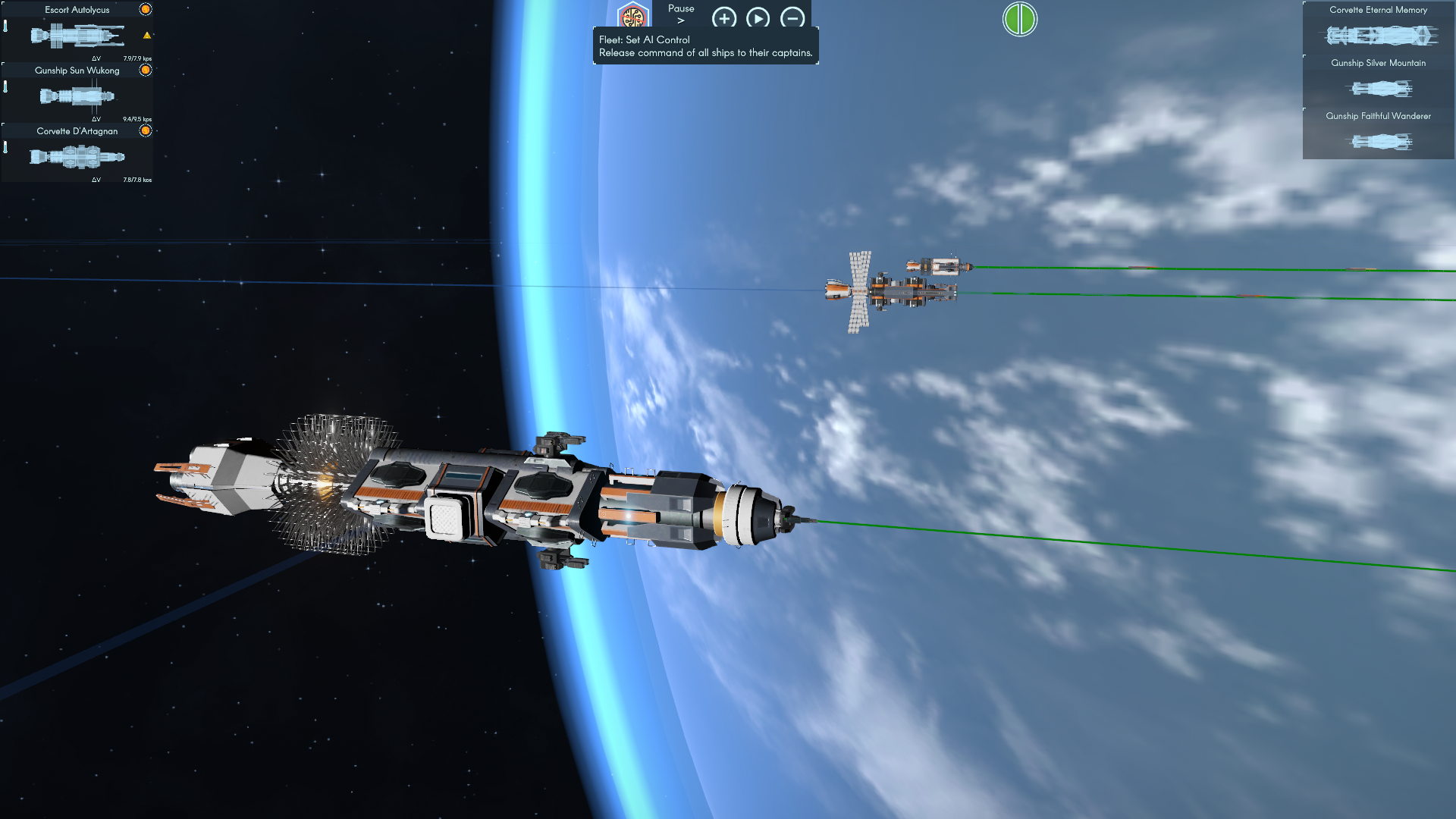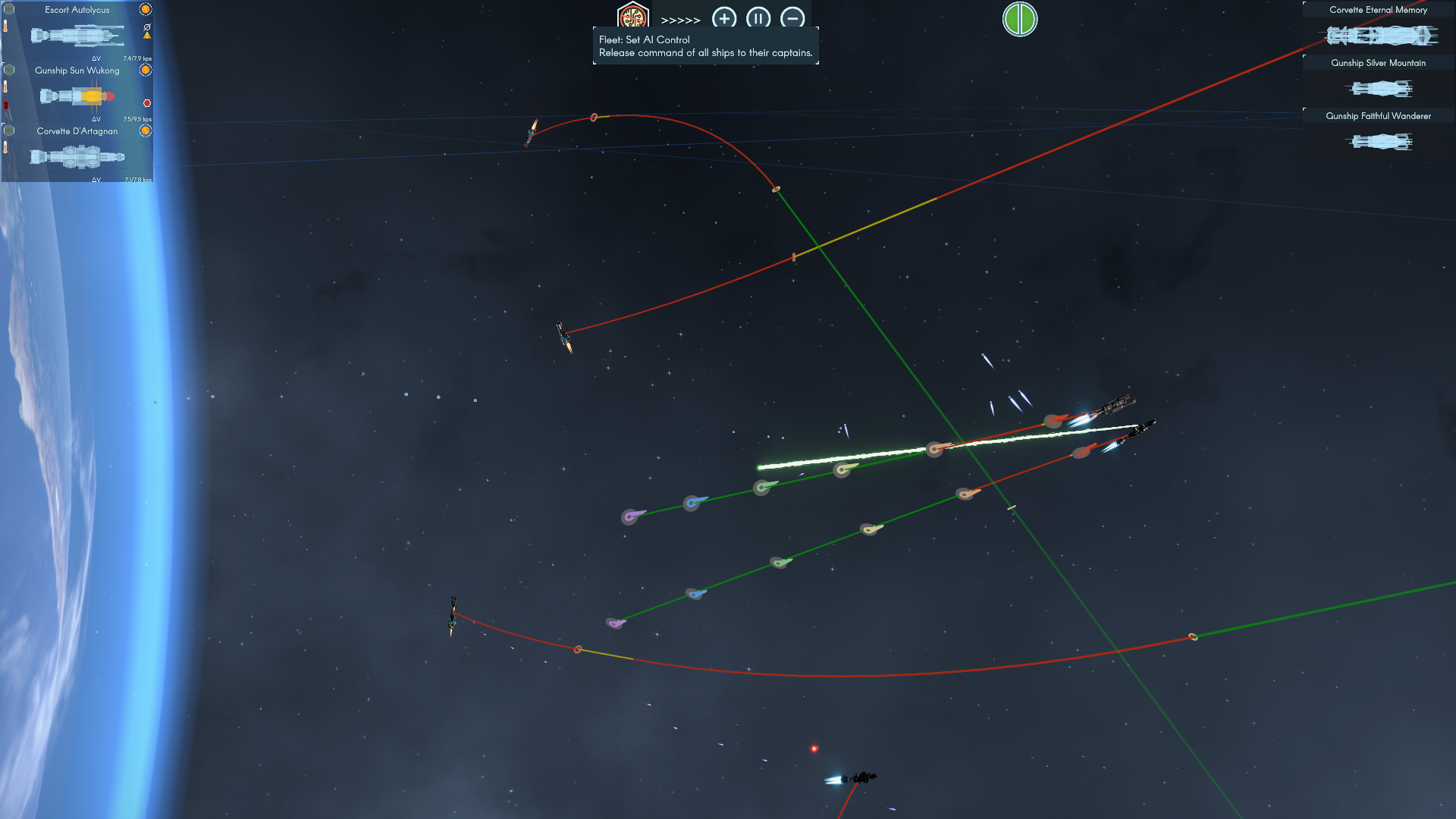
It didn't take long for me to realize Terra Invicta (Steam page) was going to be something special. A standalone game from the creators of XCOM and XCOM 2's ambitious Long War mods, Pavonis Interactive has basically taken the strategic layer from XCOM and turned it into a Paradox-style grand strategy game. The scope is just mind-boggling from the get go, and it never really stops feeling that way. Every major nation on Earth in 2022 is simulated alongside the entire solar system—out to asteroids and ice dwarfs beyond the orbit of Pluto. Describing it sounds almost ridiculous until you see it for yourself. And somehow, it also actually works.
The start date is right about now, with everything down to the Russia-Ukraine conflict and membership in transnational alliances like the EU and NATO modeled in detail. Countries have all sorts of ratings that affect how they behave, from military technology level to political freedom to wealth inequality, which can each be nudged in either direction if you gain control of their foreign policy. The big difference is that an alien spaceship has crash landed somewhere on Earth, and no one agrees on what to do about it.

Unlike most grand strategy games, though, you're not playing as a nation in Terra Invicta. Rather, you take control of one of several factions with a specific idea about how to handle the discovery of intelligent, alien life. The Resistance is the default faction, and they're like your typical XCOM or Stargate Command—their main goal is to defend Earth from alien attacks and secure humanity's independence among the stars. The Protectorate, on the other hand, wishes to submit to the aliens as a vassal state, seeing a prolonged war as a doomed affair. Project Exodus figures the neighborhood is getting a bit crowded, and they only care about building a colony ship that will allow us to secure our species' future somewhere very far away.
There is a fairly sharp contrast, at least early on, between the absurd depth of the simulation and the relatively simple ways you can interact with it. Yes, it will track atmospheric CO2 on Earth to model global climate change, rising sea levels, and the resulting economic devastation, which hits some regions harder than others. Yes, there are multiple Lagrange points around the moons of Saturn where you could place a space station. But for the first year or so, this is essentially a spy game.
Your faction is led by a council of up to eight characters who all have different missions available to them and are good at certain things. A celebrity might excel at swaying public opinion toward your faction, while a spy is good at undermining other factions' agents. Their main job is to convert Earth's nations to your faction's ideology, which is the only way to secure more resources early on and can eventually give you control of their militaries and space programs, if they have either. This is done by targeting Control Points. Larger nations like the US and China have access to far more resources, but they also have more Control Points, all of which are much more difficult to capture.
Once you secure all of a nation's Control Points, you get to set their economic priorities and foreign policies. You could treat this like a futuristic Hearts of Iron if you wanted, and try to solidify support for your faction by conquering the world with conventional military operations. Just be aware that if you attack a country or alliance that has nukes, you may be making the aliens' job easier for them. That global temperature modeling can go the other direction, too, and a nuclear winter that kills off half the population is another possible way this can all end.

Information warfare
The other factions will be attempting to dominate the globe, as well, including the ones that are pro-alien. The Servants, who think we should worship the invaders as gods, are a natural rival to the Resistance. Power blocs and even faction priorities will shift as researching alien activity slowly starts to give you a better picture of who these creatures are and what exactly they want. It's a slow burn mystery, and I certainly don't want to spoil any of it here. But I can say I was blindsided by some of the revelations that eventually came my way.
With the levers of power firmly in hand, you can shape the nations that have come over to your side in a number of ways. You can thoughtlessly pillage them for resources, try to create a utopian welfare state, or simply divert all funding toward developing a space program. And having a strong presence beyond the atmosphere will eventually be essential to securing victory.
Keep up to date with the most important stories and the best deals, as picked by the PC Gamer team.

The second phase of Terra Invicta opens up when you place your first space station. Using a resource called Boost that is generated by launch sites on Earth, you will join the scramble to colonize every planet, moon, and asteroid in sight. See, Earth has all this pesky gravity that makes launching large payloads of armor plating and laser beams prohibitively expensive. So you need to transition into acquiring resources in space and assembling new ships and stations out there. The aliens will have a head start on this, so there's no time to waste.
You'll start with fairly simple science stations like the ISS, but technology slowly unlocks options like orbital shipyards and lunar mining colonies. Out here, nation states don't matter as much anymore, and everything will either be owned by the aliens or directly by one of the human factions. Studying the aliens will not only teach you what they're doing here, but also help you catapult Earth's technology forward in an effort to catch up. Research points can be allocated to either increasing the global tech level, which helps everyone, or to your own faction's unique projects, which only benefit you. Most of those projects are unlocked by global techs, though, so you do have to care about both even if you want to keep all the shiny toys for yourself.

Finally, you're ready to start having space battles with aliens. And the pausable real time combat system takes things like momentum and facing into account, so don't expect Star Wars-style operatic dogfights. If you played Kerbal Space Program, you have some idea of what you're in for, except there are guns now. Mastering orbital transfer windows and balancing Delta-v for long voyages against combat maneuverability are essential. It's a system I've barely scratched the surface of yet.
Terra Invicta's breathtaking ambition means it's more than a bit cumbersome, and the barrier to entry is high. But I'm captivated by how it all comes together and delivers on its sky high promises while telling a compelling story with so many twists and turns. Even having played a couple dozen hours so far, I feel like I'm just getting started. I think this one is going to leave a meteoric impact on the kinds of strategy gamers who love spreadsheets, geopolitics, and kicking alien ass as much as I do.
Len Hafer is a freelancer and lifelong PC gamer with a specialty in strategy, RPGs, horror, and survival games. A chance encounter with Warcraft 2: Tides of Darkness changed her life forever. Today, her favorites include the grand strategy games from Paradox Interactive like Crusader Kings and Europa Universalis, and thought-provoking, story-rich RPGs like Persona 5 and Disco Elysium. She also loves history, hiking in the mountains of Colorado, and heavy metal music.

